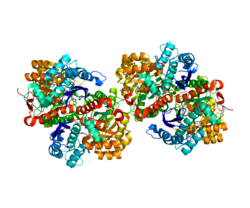Cancer
ENO1 overexpression has been associated with multiple tumors, including glioma, neuroendocrine tumors, neuroblastoma, pancreatic cancer, prostate cancer, cholangiocarcinoma, thyroid carcinoma, lung cancer, hepatocellular carcinoma, and breast cancer. [6] [9] [13] [14] In many of these tumors, ENO1 promoted cell proliferation by regulating the PI3K/AKT signaling pathway and induced tumorigenesis by activating plasminogen. [6] [9] Moreover, ENO1 is expressed on the tumor cell surface during pathological conditions such as inflammation, autoimmunity, and malignancy. Its role as a plasminogen receptor leads to extracellular matrix degradation and cancer invasion. [9] [13] [14] Due to its surface expression, targeting surface ENO1 enables selective targeting of tumor cells while leaving the ENO1 inside normal cells functional. [9] Moreover, in tumors such as non-Hodgkin lymphomas (NHLs) and breast cancer, inhibition of ENO1 expression decreased tolerance to hypoxia while increasing sensitivity to radiation therapy, thus indicating that ENO1 may have aided chemoresistance. [6] [11] Considering these factors, ENO1 holds great potential to serve as an effective therapeutic target for treating many types of tumors in patients. [6] [11] [13]
ENO1 is located on the 1p36 tumor suppressor locus near MIR34A which is homozygously deleted in Glioblastoma, Hepatocellular carcinoma and Cholangiocarcinoma. [15] [16] The co-deletion of ENO1 is a passenger event with the resultant tumor cells being entirely dependent on ENO2 for the execution of glycolysis. [17] [18] Tumor cells with such deletions are exceptionally sensitive towards ablation of ENO2. [17] [18] Inhibition of ENO2 in ENO1-homozygously deleted cancer cells constitutes an example of synthetic lethality treatment for cancer.






